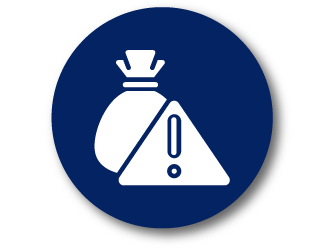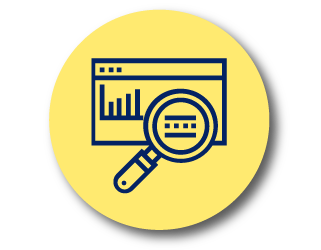Once an Austin Housing Finance Corporation (AHFC) Housing Development Assistance (HDA) award has been received and the loan closed, there might be questions on how to obtain loan disbursements and comply with the loan agreement. The HDA Compliance Team monitors projects awarded HDA funding as well as Developer Incentive Certifications and oversees loan disbursements and loan compliance. The services of the HDA Compliance Team are obtained through your assigned Ownership Housing Development Assistance (OHDA) Contract Manager or Rental Housing Development Assistance (RHDA) Contract Manager.
Below are the next steps you must take as the vendor to receive your loan disbursements. Please refer to your loan documents to ensure you understand all loan requirements, specifications, and important dates.
- Meet the HDA Compliance Team
-

Yolanda Quinton is the Contract Management Specialist for the Rental Housing Development Assistance Program and provides technical assistance and support to development teams from loan execution through project completion. Specific tasks include facilitating loan disbursements, monitoring loan agreement deliverables, and ensuring loan agreement compliance. 
Kathleen McCullough is the Contract Management Specialist for the Ownership Housing Development Assistance Program under the Austin Housing Finance Corporation. She provides assistance to housing and community developers throughout the development process for affordable ownership housing projects. She also verifies income for individual applications under AHFC and City programs, processes draw requests and deliverables, and ensures compliance with all OHDA loan agreements.
Step 1 - Loan Disbursement
Setup Requirements
The process to set up your loan disbursements may take four to five weeks and requires that you register as a vendor with the City Finance Department along with your banking information if you want to receive Automated Clearing House disbursements. We recommend starting this process before your loan closes. Vendor Responsibility
City Responsibility
|
Step 2 - Receiving Payments
|
The Delivery Order must be established, and the vendor’s banking information filed with AFO before disbursements can begin. For AcquisitionFunds are disbursed at closing. This means the title company must be set up as a vendor with the City on AFO and wiring information for the transaction coordinated ahead of time. For Pre-DevelopmentProgress draws are used to disburse funds during this phase of the project. Requests for funds can be submitted by the developer once a month. Allowable costs must have been incurred within 90 days of the disbursement request. Requests must be accompanied by supporting documentation such as invoices or receipts to prove costs were incurred. For ConstructionProgress draws are used to disburse funds during this phase of the project. Requests for funds can be submitted by the developer once a month. Allowable costs must have been incurred within 90 days of the disbursement request. Requests must be accompanied by a notarized American Institute of Architects (AIA) payment application to prove costs were incurred and a Compliance Affidavit, executed by the Borrower, evidencing payment of contractors and subcontractors with respect to the draw request. A draw inspection conducted by the City is required before payment can be issued.
|
- Home Sales - Ownership Housing Development Assistance (OHDA)
-
Refer to your loan documents regarding dates and pricing for final home sales. All individual homebuyer contracts must be delivered within five days of execution. Documents required for closing:
- Title Commitment
- Initial Closing Disclosure
- Release of Lien to be signed
- Restrictive Covenant/Resale Agreement-covenant running with the land and agreement by all parties regarding affordability period, equity,
- Appraisal
- Homebuyer Education Certificate
Principals Residence
Purchasers of OHDA-assisted affordable housing must occupy the properties as their principal residence for the applicable term of the affordability period. The subject property cannot be used for rental, commercial or any other purpose other than their principal residence. This requirement will be reflected in a restrictive covenant running with the land.
Ownership
The OHDA program requires ownership of the property using one of the approved forms of ownership described below. Families and individuals own the property if they:
- Have fee simple title to the property, or
- Maintain a 99-year leasehold interest in the property through a Community Land Trust or other similar vehicle, or
- Own a condominium, or
- Own or have a membership in a cooperative or mutual housing project that constitutes homeownership under Texas law, or
- Maintain an equivalent form of ownership approved by the AHFC
Resales
For resale of any OHDA assisted units, the seller must submit to AHFC all documents required for income certification. After closing on any OHDA assisted unit, all necessary documents including executed and recorded deed of trust as well as Restrictive Covenant must be submitted to AHFC for record retention.
- Leasing - Rental Housing Development Assistance (RHDA)
-
Refer to your loan documents regarding dates and rental rates for final lease-up.
- A copy of potential lease document must be provided to AHFC for approval before it is used for any leases with tenants.
- Borrower must adopt written tenant selection policies as laid out in the RHDA guidelines and follow the provision laid out in the RHDA Tenant Lease Addendum (PDF) Spanish RHDA Tenant Lease Addendum (PDF).
- If tenant paid utilities, Borrower must use approved Utility Schedule to adjust rents under the maximum allowable rent per unit.
- Borrower must complete and have tenant sign the Initial Tenant Information and Income Certification Form (TIC) (PDF) for each affordable unit due monthly on the tenth calendar day of each month until 100% initially occupied accompanied by the Initial Occupancy Monthly Tenant and Compliance Report (PDF).
- If a unit has been leased and then vacant again before 100% initial occupancy, such unit does not need to be reported again.
- In the event of a rejected application for rental housing, Borrower must give prompt written notification of the rejection and the basis for the decision.
- Tenants must be selected from a written waiting list in chronological order, or in the case of units set aside for Continuum of Care (CoC), accept referrals exclusively from the Coordinated Assessment system maintained by the Ending Community Homelessness Coalition (ECHO).
- Leases between Borrower and tenants must be for at least one year unless the tenant and Borrower mutually agree to a shorter term.
- A Schedule for annual recertification of tenant household income must be adopted, either:
- Recertifying income on the anniversary of the original income evaluation,
- At lease renewal,
- On an annual schedule whereby all tenant households are recertified during the same month
- For recertification, source documentation must be collected each time OR a self-certification must be completed through the Annual Tenant Information and Income Certification Form (PDF). If the latter method is used, Borrower must collect original source documentation for each tenant household every sixth year during the Affordability Period.
- No tenant may be displaced due to increases in income subsequent to initial occupancy of a unit. If a household’s income exceeds the applicable limit at the annual income recertification:
- Borrower may adjust the rent to an amount that does not exceed 30% of the household’s monthly income; and
- Borrower will not be found to be in non-compliance provided that when the household vacates the unit, the unit is next leased to a household whose income is within the required limit at the time of occupancy.
Step 3 - Income Eligibility
|
We refer to HUD 24 CFR Part 5 income guidelines for all programs. This calculation takes into consideration income and assets to compute a forward-looking 12-month average. Guidance on determining whose income to count within the household, what type of income must be included or excluded, and the calculation of imputed income from assets is found in the Technical Guide to Determining Income and Allowances for the HOME Program (PDF) HUD Guide.
|
Step 4 - Federal Compliance
|
Davis Bacon (DBRA)The Davis-Bacon and Related Acts (DBRA), applies to contractors and subcontractors performing on federally funded or assisted contracts in excess of $2,000 for construction, alteration, or repair (including painting and decorating) of public buildings or public works. DBRA requires laborers and mechanics employed under contract to be paid no less than the locally prevailing wages and fringe benefits for corresponding work on similar projects in the area. Section 3In reference to the HUD Act of 1968, as amended, “Section 3” requires projects receiving $200,000 or more in federal funds for any activity that involves housing construction, rehabilitation, or other public construction, to the greatest extent feasible, provide job training, employment, and contracting opportunities for low or very-low-income residents in connection with projects and activities in their neighborhoods. Review the Frequently Asked Questions (FAQs) for Section 3 (PDF). Build America, Buy America Act (BABA)BABA was signed into law by President Biden on November 15, 2021, as part of the Infrastructure Investment and Jobs Act. It requires that federally funded infrastructure projects, which includes projects funded by federal grants, cooperative agreements, non-cash contributions or donations, direct assistance, loans and loan guarantees, and other financial assistance must use iron and steel, construction materials, and manufactured products that are produced in the United States.
|
- What if My Project has Multiple Federal Funding Sources from Different Agencies?
-
AHFC coordinates federal labor compliance with other agencies. This may include sharing labor compliance documentation with these agencies or asking for our own set of documents for review. In these cases, the AHFC Labor Standards Officer (LSO) will inform you of the documents and processes necessary to demonstrate compliance. In all circumstances a Notice to Proceed will need to be issued from AHFC prior to the start of project construction.
-
Step 5 - Closeouts
|
Once all project deliverables have been completed and all loan terms have been met, the Development is ready for close-out as an active loan agreement. Borrower must submit:
|
Step 6 - Monitoring
|
During the affordability period the developer, management company, or enforcing entity must maintain adequate records including, but not limited to documentation of costs and contracts associated with the development, tenant waiting lists, tenant selection policies, and documentation for all tenant files for five years after the affordability period has ended. Requirements for Enforcing Entities for OHDA
Property Manager Requirements for RHDA
If the development is to be sold, the development owner entity must provide a Right of First Refusal (ROFR) to AHFC that permits AHFC (or an affiliate) to purchase the development by matching a bona fide offer from an unrelated, third party to purchase the development. The AHFC ROFR will be subordinate to any TDHCA ROFR. The Affordability Period shall not be shortened for any reason, including if the loan is repaid before the end of the Affordability Period. Affordability requirements and restrictions will remain in force throughout the Affordability Period regardless of transfer of ownership unless ownership of the property is transferred through foreclosure proceedings. |






 Projects awarded with federal funds have a second layer of due diligence to make sure people in the community are given the opportunity to work on the project.
Projects awarded with federal funds have a second layer of due diligence to make sure people in the community are given the opportunity to work on the project.
